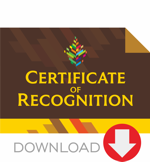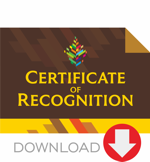A Study on Fish Reproduction for Prevention of Species Loss due to Batik Waste Pollution
Building: Java Heritage Convention
Room: Room I
Date: 2018-11-06 11:45 – 12:00
Last modified: 2019-05-07
Abstract
Batik is one of Indonesian cultural heritage. Its waste product, however, contains chemical and metal which potentially affect the endocrine system and reproductive system of fish living in waters receiving such waste. This study was conducted to evaluate the reproductive status of the fish caught in a river receiving batik waste. Samples were collected according to purposive random sampling in 5 stations representing upstream, polluted and downstream area of the Meduri River in the Central Java. Sampling was conducted from July to August 2011. The fish was caught using gill net with mess size of 1 inch. The fish were identified for species determination. They were sexed, and their total body length and weight were measured. Whenever applicable the gonads were examined to determine their reproductive status. The results showed that there were 10 species caught consisting of Anabas testudinaeus (n = 129), Trichogaster trichopterus (n = 310), Mugil sp. (n = 6), Scatophagus argus (n = 8), Valamugil speigleri (n = 11), Channa striata (n = 2), Bagrus nemurus (n = 1), Laiognathus fasciatus (n = 2), Oreochromis niloticus (n = 5) and Oreochromis mossambicus (n = 5). O. striatus was only found at the upstream area (n = 2). T. trichopterus and A. testudinaeus were observed at all sampling stations, while the rest were only found at the downstream area. Sex could be identified in T. trichopterus (? 60.3%, ? 39.7%), A. testudinaeus (? 45%, ? 45%, juvenile 10%), Mugil sp. (? 83%, ? 417), S. argus (all juvenile), V. speigleri (all juvenile), C. stratiata (? 50%, ? 50%), B. nemurus (? 100%), L fasciatus (all juvenile), O. niloticus (? 50%, ? 50%) and O. mossambicus (? 40%, ? 50%). The gonado-somatic index (GSI) and hepato-somatic index (HSI) were examined in T. trichopterus and A. testudinaeus. The GSI and HSI of female T. trichopterus were 0.12–7.9% and 0.86–2,17% and of the male were 0,19–3,7% and 0.60–2.0%. The GSI and HSI of female A. testudinaeus were 0.12–5.52% and 0.77–2.01%, and male were 0.34–7.0% and 0.68–1.92% respectively. Water temperature during study period were 29.3–32.7oC, pH 7–10, DO 0.16–1.79 mg/L, BOD 12.08–40.11 mg/L, COD 166.67–546.67 mg/L and total phenol 0.50–4.20 mg/L. These results suggested that the sampled fish were reproductively active but only those resistant to low water quality reproduced successfully.

